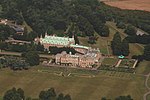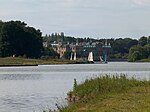Holbeck, Nottinghamshire
Bassetlaw DistrictFormer civil parishes in NottinghamshireNottinghamshire geography stubsUse British English from May 2016Villages in Nottinghamshire

Holbeck is a village and former civil parish, now in the parish of Norton, Cuckney, Holbeck and Welbeck, in the Bassetlaw district, in the county of Nottinghamshire, England. It is located 6 miles south-west of Worksop. According to the 2001 census it the parish a population of 449, reducing to 195 (including Holbeck Woodhouse and Welbeck) at the 2011 Census. It is an estate village built for the Dukes of Portland at Welbeck Abbey.
Excerpt from the Wikipedia article Holbeck, Nottinghamshire (License: CC BY-SA 3.0, Authors, Images).Holbeck, Nottinghamshire
Bassetlaw Norton, Cuckney, Holbeck and Welbeck
Geographical coordinates (GPS) Address Nearby Places Show on map
Geographical coordinates (GPS)
| Latitude | Longitude |
|---|---|
| N 53.25 ° | E -1.18 ° |
Address
S80 3NQ Bassetlaw, Norton, Cuckney, Holbeck and Welbeck
England, United Kingdom
Open on Google Maps








